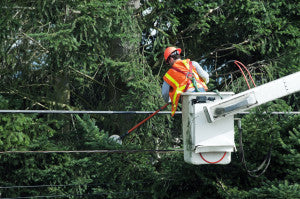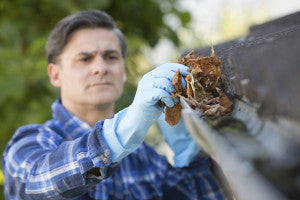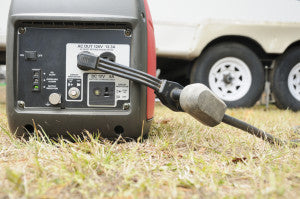Guest post by Cristina Miguelez
Depending on the area you live in, hurricanes can be a real and serious problem that homeowners need to address in order to keep their homes and properties as safe as possible. While it can feel impossible to completely hurricane proof your home, it is possible to take steps to help prevent significant damage, reducing problems and associated costs. These eight steps will help you be prepared for the next big storm that blows your way.
- Inspect Your Roof
Your roof does more than simply top your home; it also helps to protect it from things like water damage during a hurricane. Making sure that it’s in good condition now will ensure that it can provide the maximum amount of protection later.
What to Look for and Fix

A quick scan of your roof and the underside of your roof deck in the attic can alert you to all kinds of problems that are easily addressed before they become big. Take a look for any of the following, which can be seen from the ground or inside your home:
- Water stains on the roof deck
- Mold, mildew, or wood rot in the attic
- Missing, broken, or cracked shingles
- Missing or cracked flashing
- Moss on your roof
Any of these signs can indicate a need for roof repair. A roof in good condition will hold up much better to a hurricane than a roof that is already weak or leaking.
Cost
The average cost of
roof repair is around $630, and can save you a potential roof replacement and associated interior damage in the event of a hurricane.
- Caulk Windows and Doors
Windows, doors, and other penetrations in your home’s exterior are all potential sources for water to enter. And moisture getting into your home has a way of turning into a bigger problem, such as mold, mildew, softening plaster, damage to flooring, and wood rot.
What to Look for and Fix
Take a look at your windows and doors from the outside. There should be a thick bead of caulk around the frame where it meets the siding. If this is missing, repair it by using an exterior-rated silicone based caulk and filling in the gaps.
Cost
The cost of a tube of caulk and caulk gun will range between
$3 and $30, and you can easily tackle this job DIY at any time of year.
- Keep Your Yard Clean
An overgrown yard is an invitation for damage during the high winds of a hurricane. Dead tree limbs, overgrown shrubs, and other debris can be thrown into your home, potentially damaging windows, siding, and fencing.
What to Look for and Fix

Take a look around your yard, and keep an eye out for things such as:
- Dead or dying tree limbs
- Tree limbs that are growing too close to power lines
- Shrubs or bushes that have grown beyond their normal size or scope
- Fallen branches or logs
Have a landscaper come in and trim back your trees and shrubs as needed, and keep your yard free of debris that could become airborne in the event of a hurricane.
Cost
The cost of yard cleanup and the
trimming of overgrown or dying bushes and tree limbs ranges from between $200 to $300 depending on the amount of work to be done.
- Clean Your Gutters/Inspect Drains

Hurricanes don’t just bring high winds with them when they arrive; they also bring heavy rainfall as well. All that rain needs to go somewhere, preferably away from your roof and your home before it has a chance to infiltrate your roof. Keeping your gutters and drains in good working order means water won’t back up beneath your shingles, potentially causing leaks.
What to Look for and Fix
Take a look inside your gutters and make sure they’re clear of leaves, pine needles, and other debris. Make sure the drains are clear and running free, and that there is no rust, holes, or other damage to the drainage system. Your gutters should direct the water away from your foundation at their end as well.
Cost
If your gutters are clogged or in need of repair, your costs will typically be around
$100 to $140 to get them back in good working order.
- Reinforce or Install a New Garage Door
How old is your garage door, and what kind of condition is it in? If it’s older, it’s likely not rated to withstand the hurricane force winds and potential debris that goes along with them. Replacing your garage door will help to ensure that this area of your home can remain protected.
What to Look for and Fix
Check the rating of your current door. If necessary, have it reinforced or replace it with a model designed to withstand hurricanes.
Cost
A new
garage door costs between $500 and $800 to have installed, and can go a long way toward ensuring the safety of your belongings.
- Protect Attached Structures
Often, homes located in hurricane-prone areas often have a lot of outdoor living areas attached to their homes, such as canopies, decks, lanais, and porches. These areas all need to be secured or otherwise protected to help minimize potential damage.
What to Look for and Fix
Inspect the condition of any outdoor structures attached to your home, including:
- Carports
- Canopies
- Decks
- Lanias
- Porches
- Sheds
Look for weak or damaged areas that may need repair, and consider consulting a structural engineer to let you know if they need additional support to withstand a storm.
Cost
The average cost of repairing or supporting these structures is around $60 to $80 per hour to hire a
handyman for each area you need to secure.
- Have a Portable Backup Generator
Hurricanes are well known for knocking out the power to the areas they hit, potentially for long stretches of time. Having a generator can ensure that you are able to keep your food cool, your phones charged, and sensitive or necessary equipment running. This is especially important for those that have medical equipment that needs to be kept running, and in homes with young children or the elderly.
 What to Look for and Fix
What to Look for and Fix
If you live in a hurricane prone area, you should have a portable backup generator and fuel on hand. Keep the fuel stored separately, outside your home if possible, and turn it on periodically to make sure it fires up when you need it.
Cost
The average
cost of a portable backup generator is around $1,200 to $2,000, depending on the size of the unit you need to power your home.
- Install Hurricane Shutters
Hurricane force winds and the debris they can bring with them can shatter the glass on the windows in your home. That’s why hurricane shutters can help protect your home from both the glass and the water infiltration that will follow.
What to Look for and Fix
If possible have professionally installed hurricane shutters put on your home, and pull them closed when the next hurricane is forecast to be approaching you. If this isn’t possible, however, consider simply having some plywood cut to size, and nailing it up over your windows. While not the most attractive look, plywood can and will protect your home in the event of a hurricane.
Cost
The average cost of this fix is between
$15 and $25 per shutter installed.
Protect Your Home
When hurricane season approaches, take the time to review these eight points and to make sure your home is protected to help minimize damage. Take the time as well to review your homeowner’s insurance policy to determine what further steps you could take, what damage will be covered, and what your next steps should be after the hurricane ends. Stay safe during this troubling time of year, and protect your home from the elements.
Cristina is Content Manager at Fixr.com, a website that connects consumers with service professionals in their area and estimates the cost for remodeling projects. She writes about home improvement tips and tricks to help homeowners learn more about improving their properties.

 A quick scan of your roof and the underside of your roof deck in the attic can alert you to all kinds of problems that are easily addressed before they become big. Take a look for any of the following, which can be seen from the ground or inside your home:
A quick scan of your roof and the underside of your roof deck in the attic can alert you to all kinds of problems that are easily addressed before they become big. Take a look for any of the following, which can be seen from the ground or inside your home:
 Take a look around your yard, and keep an eye out for things such as:
Take a look around your yard, and keep an eye out for things such as:
 Hurricanes don’t just bring high winds with them when they arrive; they also bring heavy rainfall as well. All that rain needs to go somewhere, preferably away from your roof and your home before it has a chance to infiltrate your roof. Keeping your gutters and drains in good working order means water won’t back up beneath your shingles, potentially causing leaks.
What to Look for and Fix
Take a look inside your gutters and make sure they’re clear of leaves, pine needles, and other debris. Make sure the drains are clear and running free, and that there is no rust, holes, or other damage to the drainage system. Your gutters should direct the water away from your foundation at their end as well.
Cost
If your gutters are clogged or in need of repair, your costs will typically be around $100 to $140 to get them back in good working order.
Hurricanes don’t just bring high winds with them when they arrive; they also bring heavy rainfall as well. All that rain needs to go somewhere, preferably away from your roof and your home before it has a chance to infiltrate your roof. Keeping your gutters and drains in good working order means water won’t back up beneath your shingles, potentially causing leaks.
What to Look for and Fix
Take a look inside your gutters and make sure they’re clear of leaves, pine needles, and other debris. Make sure the drains are clear and running free, and that there is no rust, holes, or other damage to the drainage system. Your gutters should direct the water away from your foundation at their end as well.
Cost
If your gutters are clogged or in need of repair, your costs will typically be around $100 to $140 to get them back in good working order.
 What to Look for and Fix
If you live in a hurricane prone area, you should have a portable backup generator and fuel on hand. Keep the fuel stored separately, outside your home if possible, and turn it on periodically to make sure it fires up when you need it.
Cost
The average cost of a portable backup generator is around $1,200 to $2,000, depending on the size of the unit you need to power your home.
What to Look for and Fix
If you live in a hurricane prone area, you should have a portable backup generator and fuel on hand. Keep the fuel stored separately, outside your home if possible, and turn it on periodically to make sure it fires up when you need it.
Cost
The average cost of a portable backup generator is around $1,200 to $2,000, depending on the size of the unit you need to power your home.



5 comments
Sariah Meagle
Inspecting my roof will be the first thing I’ll do before summer comes in order to prepare for a storm. I think I’ll inspect my gutters and drains as well so that it won’t malfunction when heavy rains come. I appreciate that you mentioned that I have to caulk my windows and doors as well but I’ll buy new storm windows and have them installed first since I need to have my windows replaced anyway. http://southernglassinc.com/index-5.html
Aaron Potts
Great article! I think some might not think about vacuum sealing items that could get ruined if they get wet before you can use the like TP,important documents, tinder to start fires, etc.
David Johnson
In this article, I really appreciated how you explain that generators are important for medical equipment as well as phones if the power goes out. For the past month, there have been storm warnings near me. I’ll have to find a home generator service. https://www.alwaysreadygen.com/service-areas/home-standby-generators-in-port-st-lucie/
Emergency Essentials
Great feedback! We’ll be sure to keep these suggestions in mind for future iterations of our 72 hour emergency food kits.
Je powers
Good info. I have a suggestion for slight changes I would like to see in you 72 hour emergency food kits. Powdered milk in larger packets, potato flakes or powder, ramen type noodles, instant rice because if you do not have stove, these last three reconstitute in room temperature water. I like the cream of wheat choices, and the powdered fruit drink mixes. Powdered instant cocoa might be a good item too. Powdered wheat-barley-chlorella mixes fast and is great nutrition. A few psd veggies too.